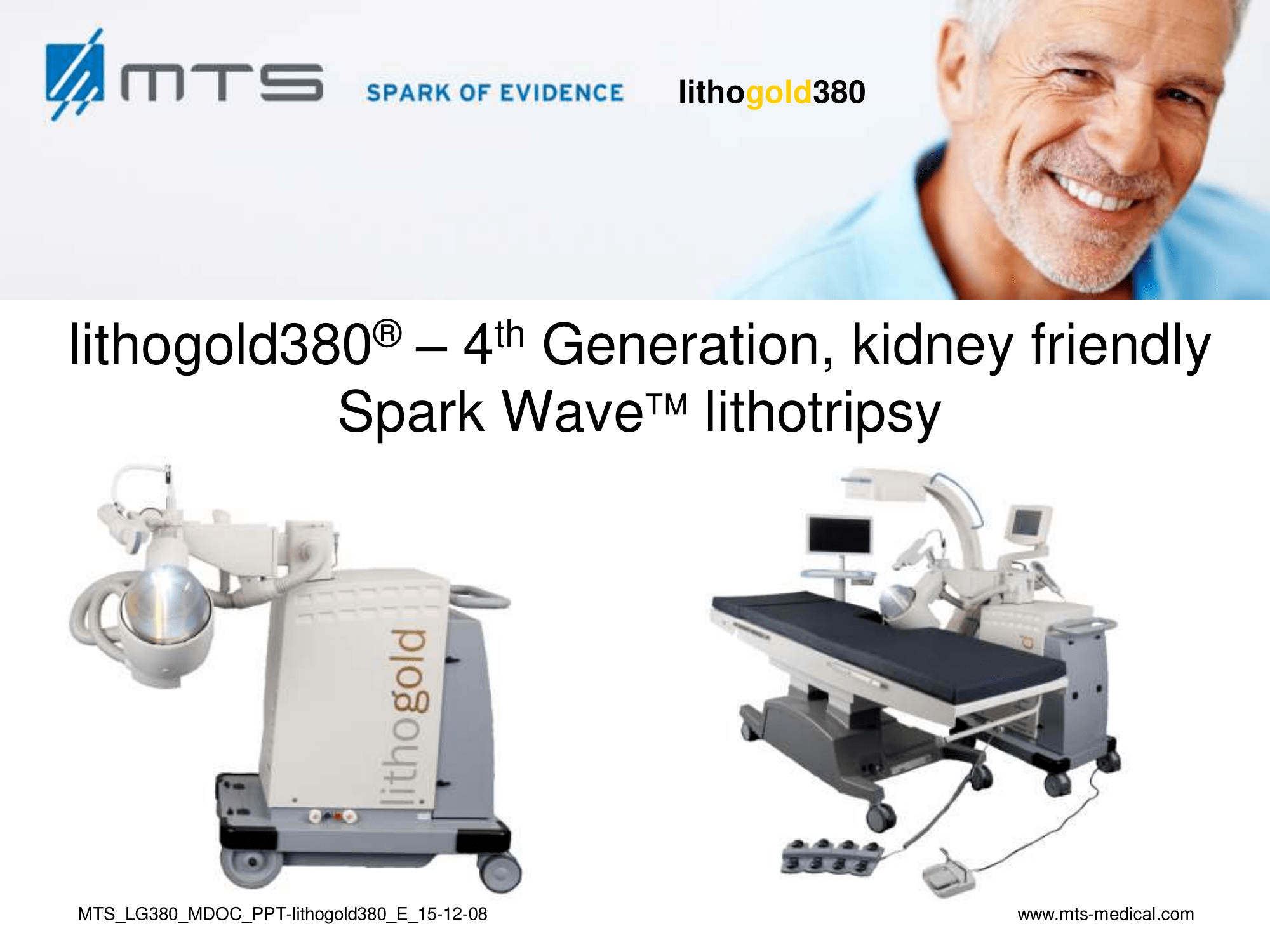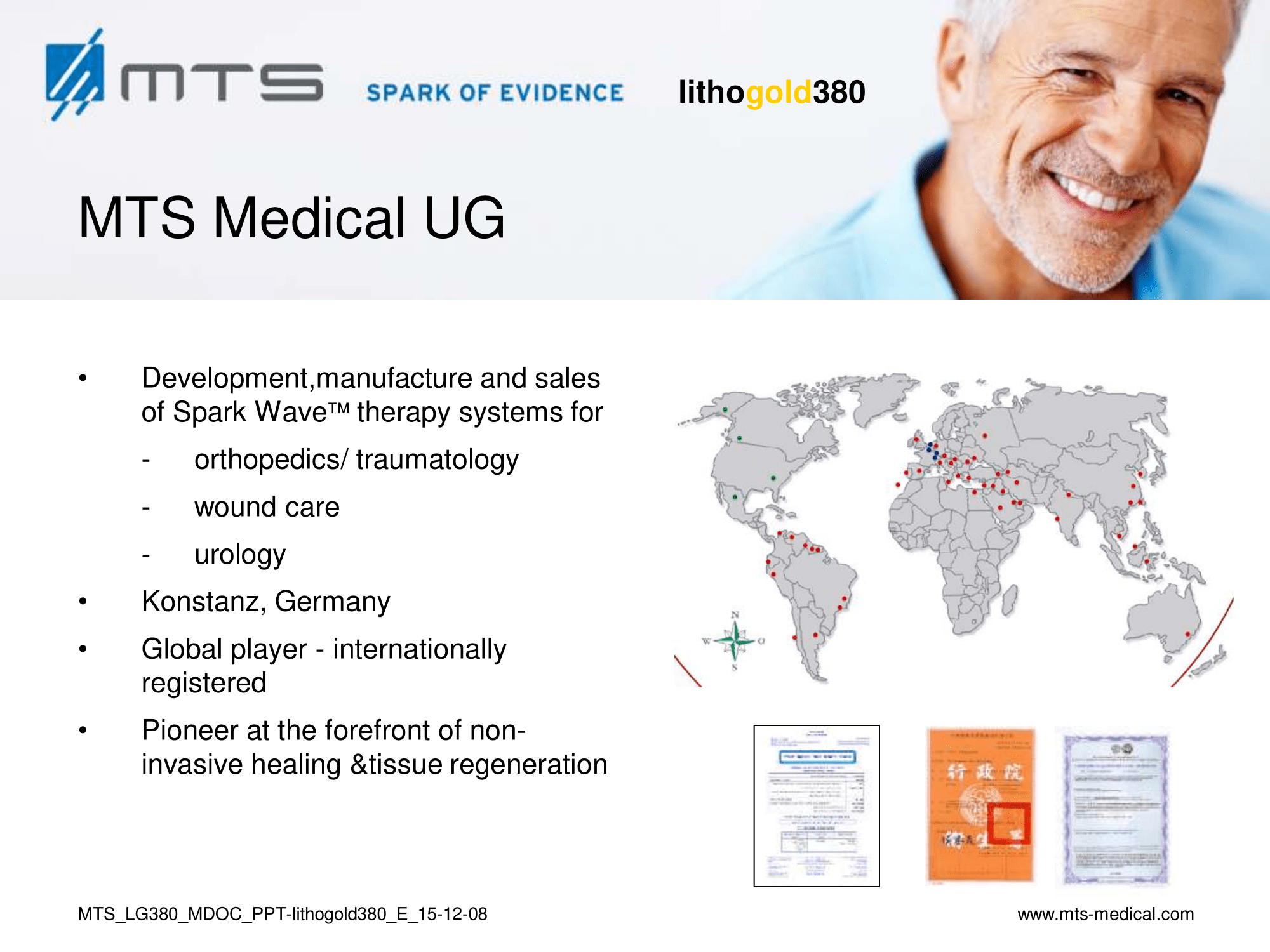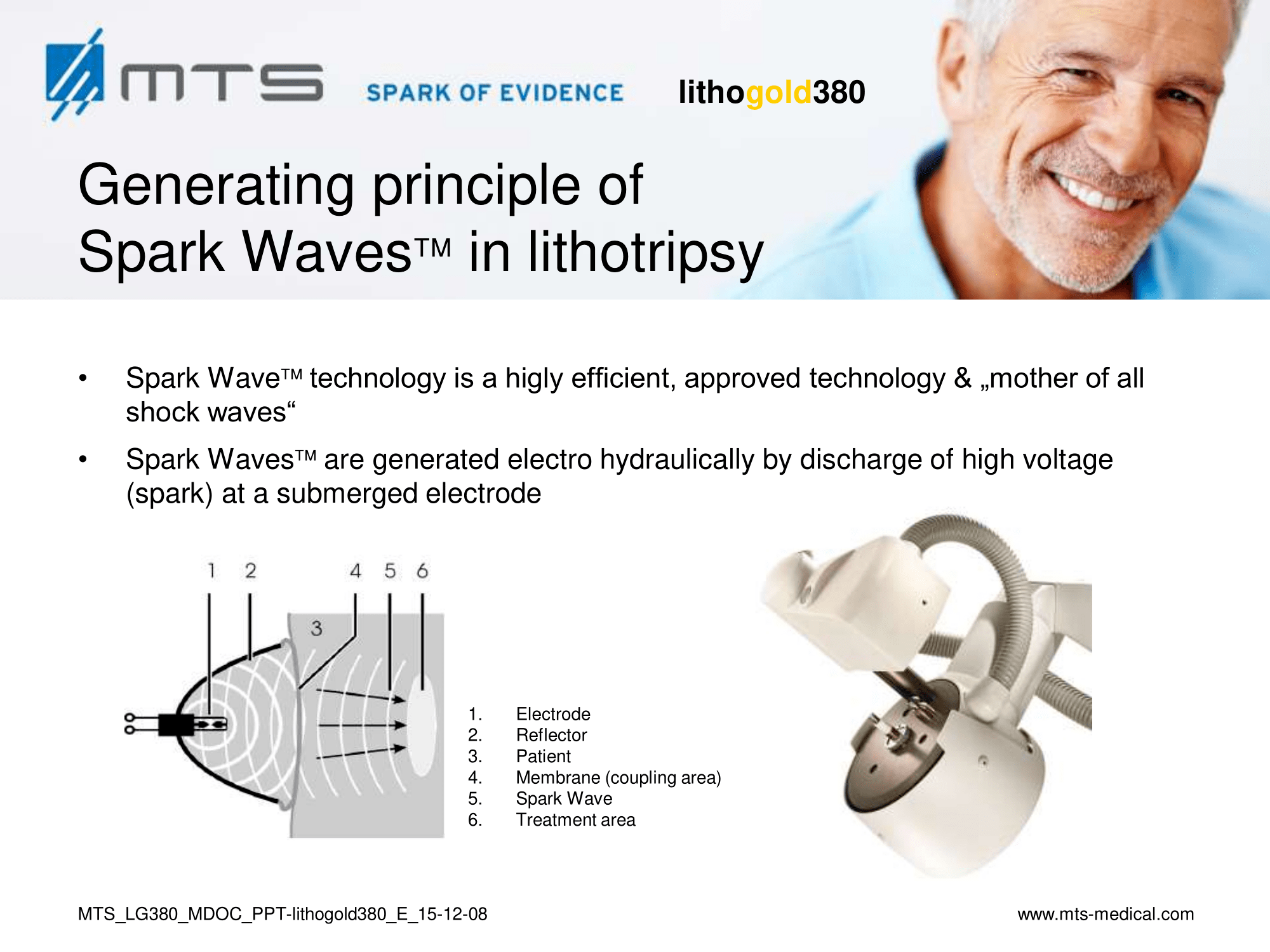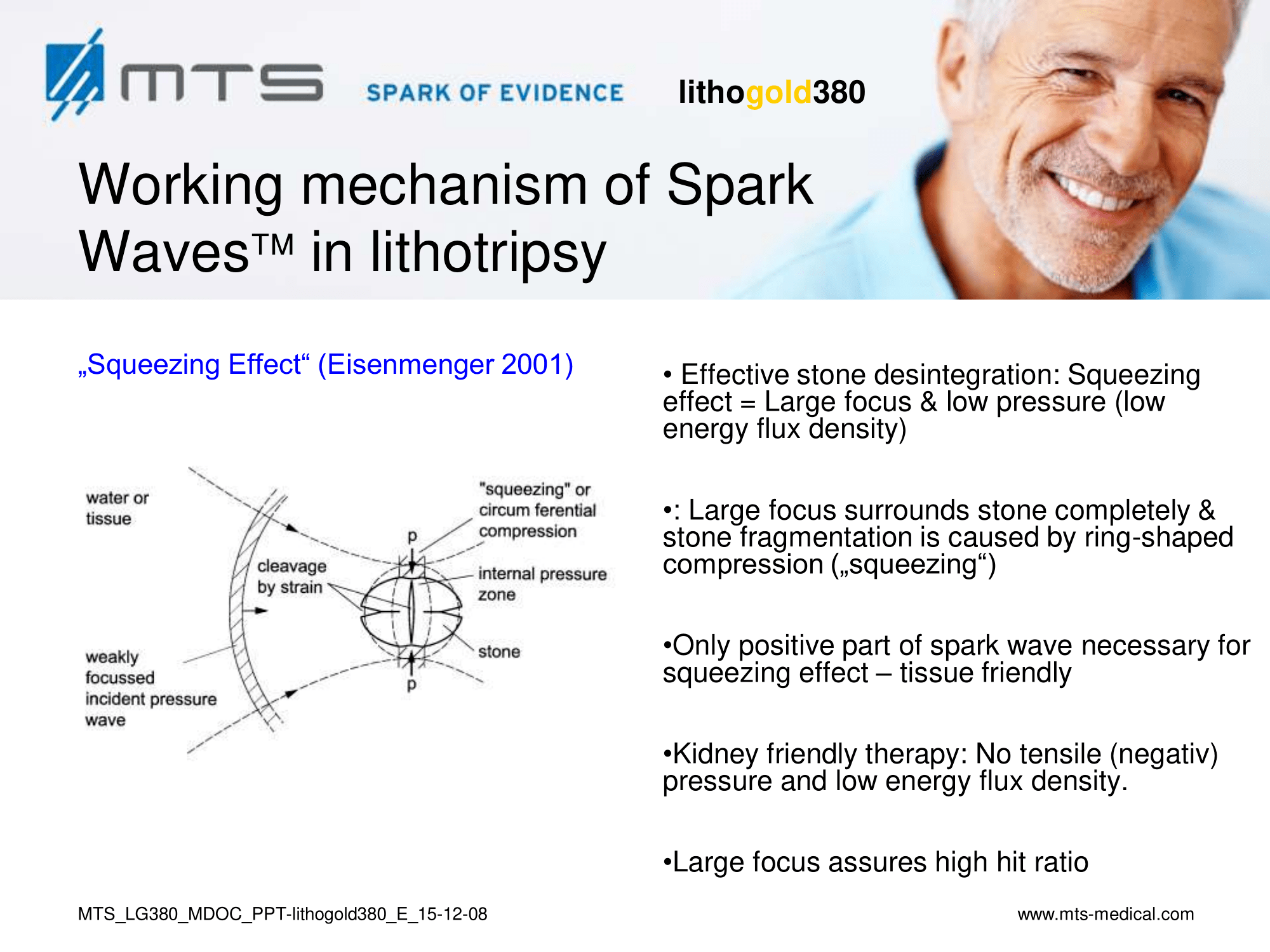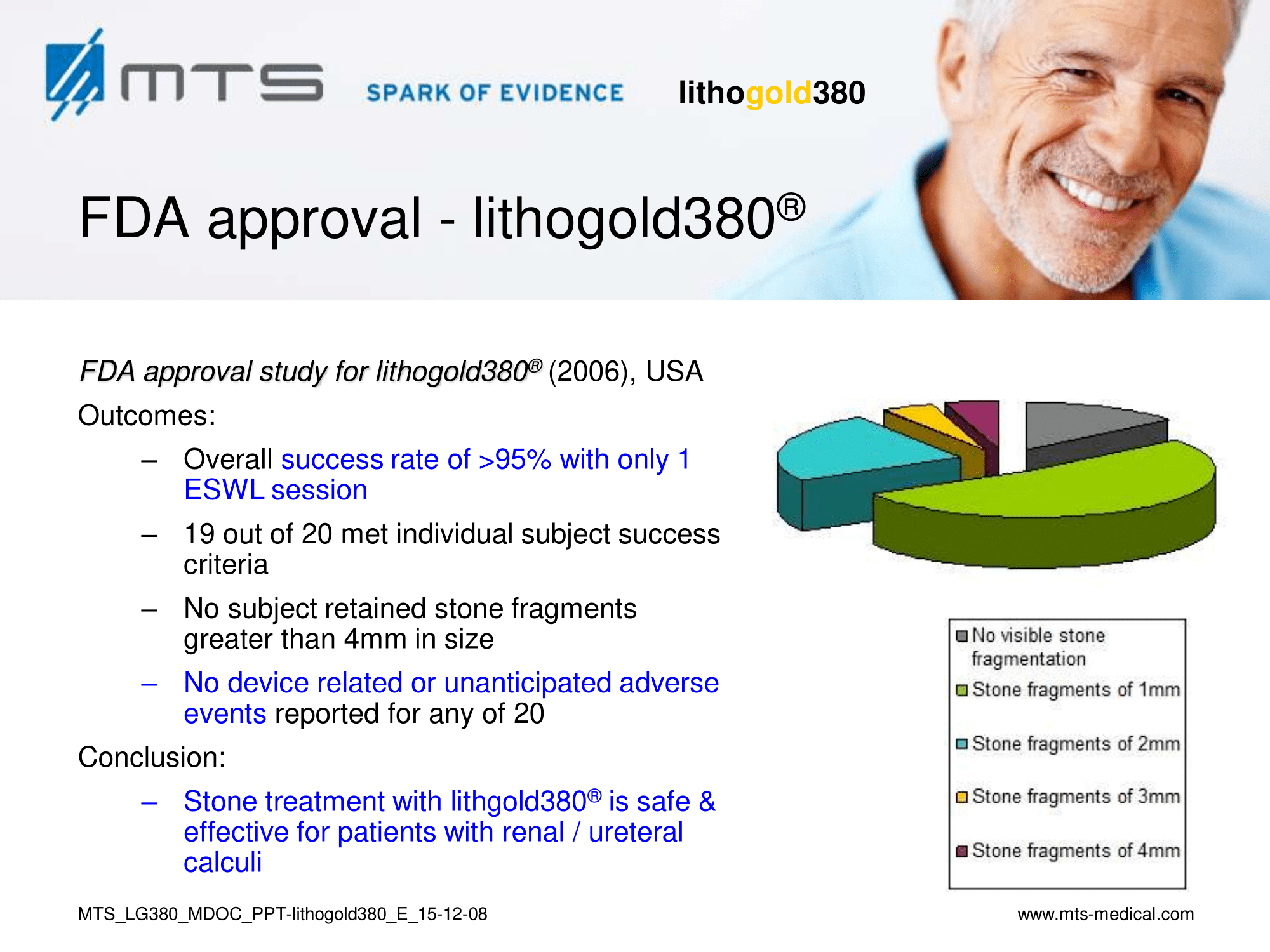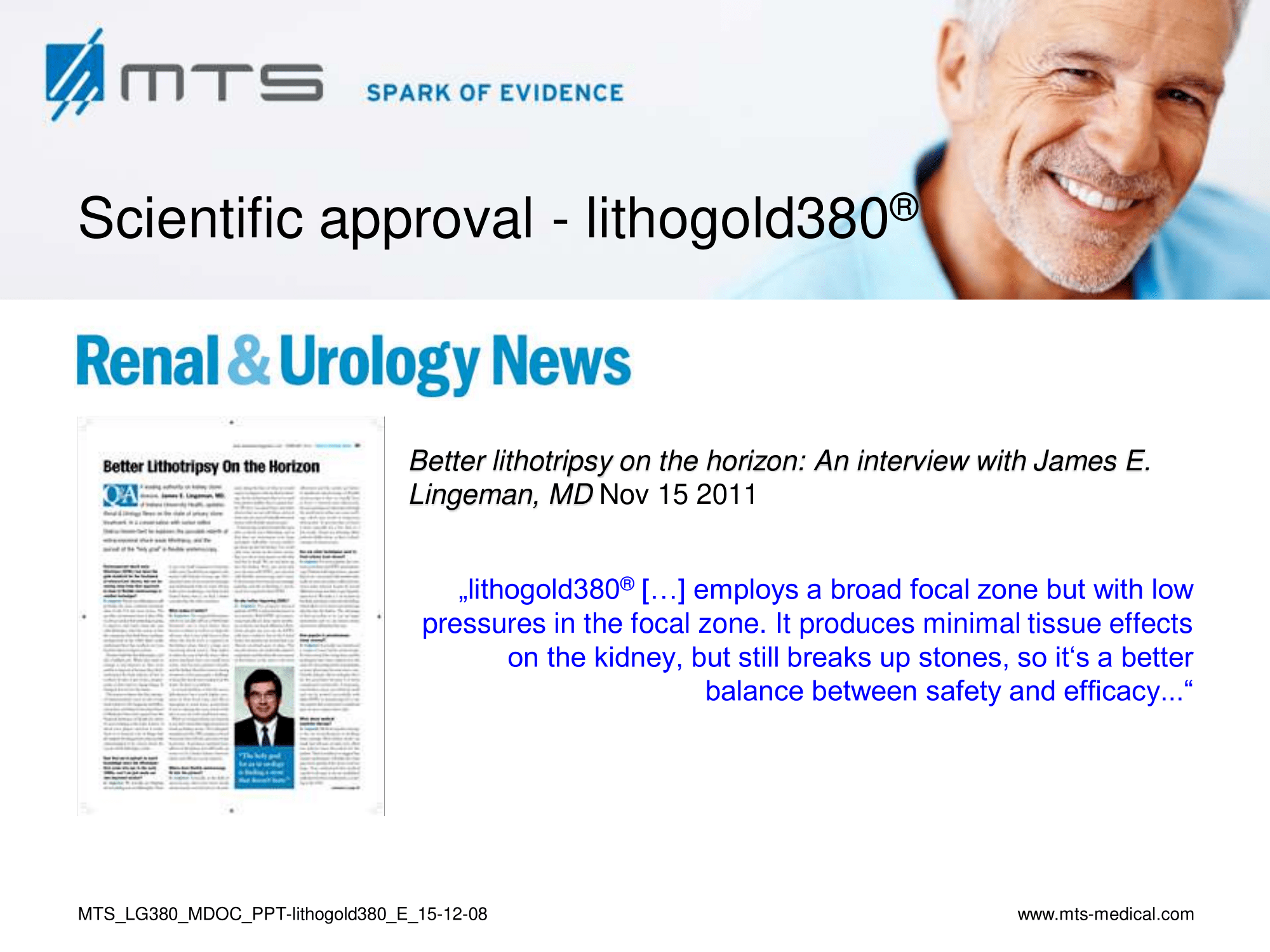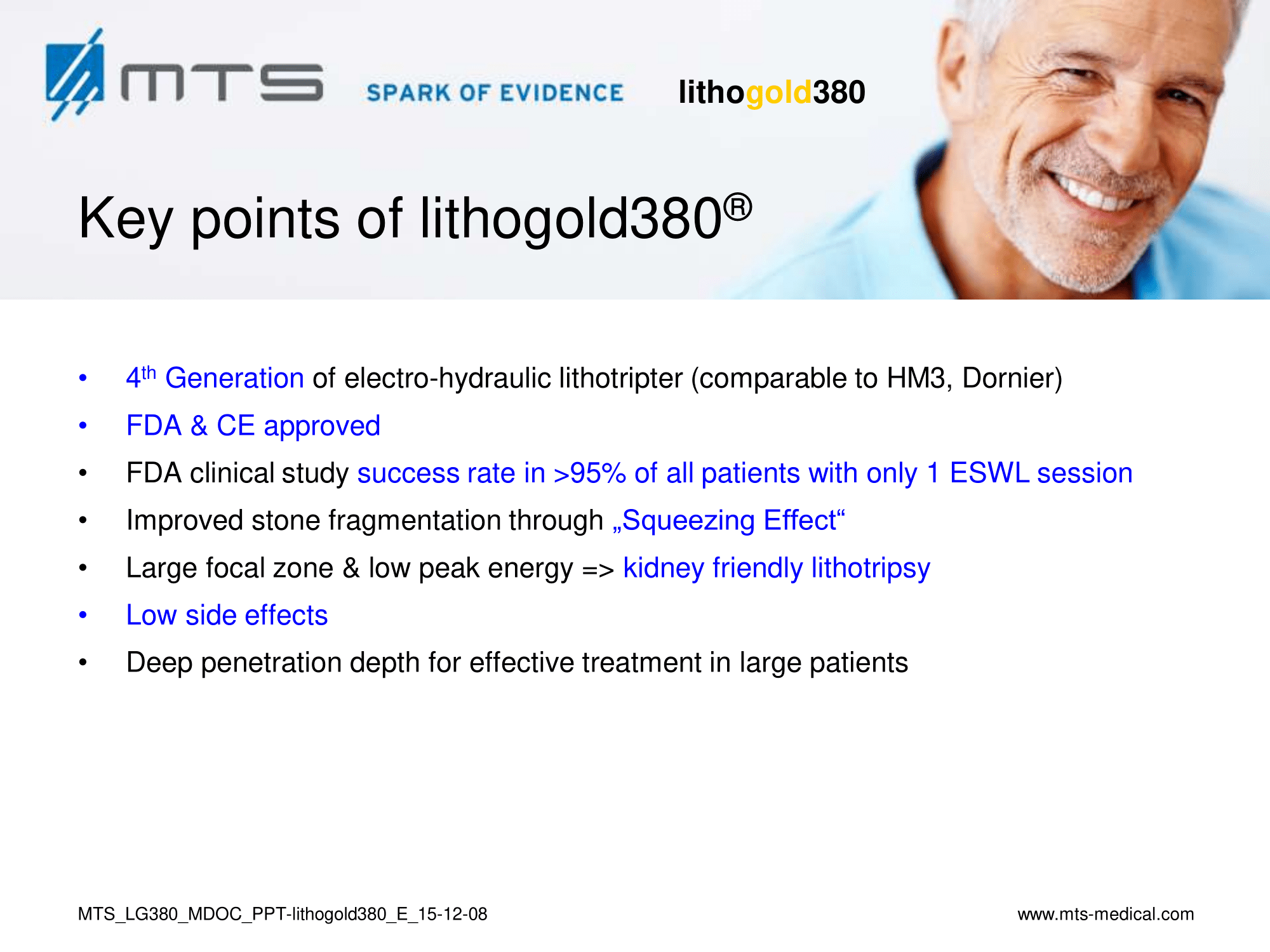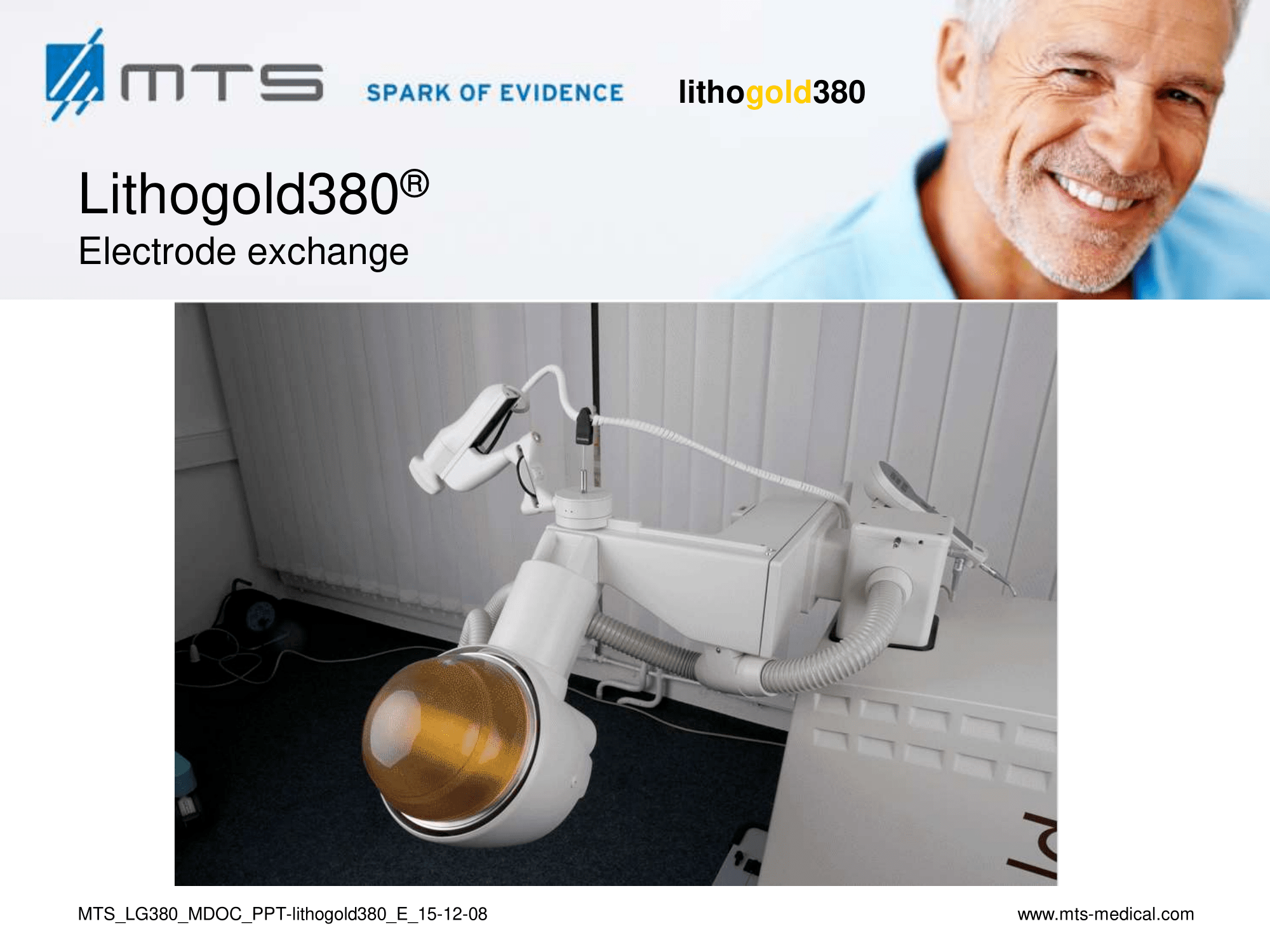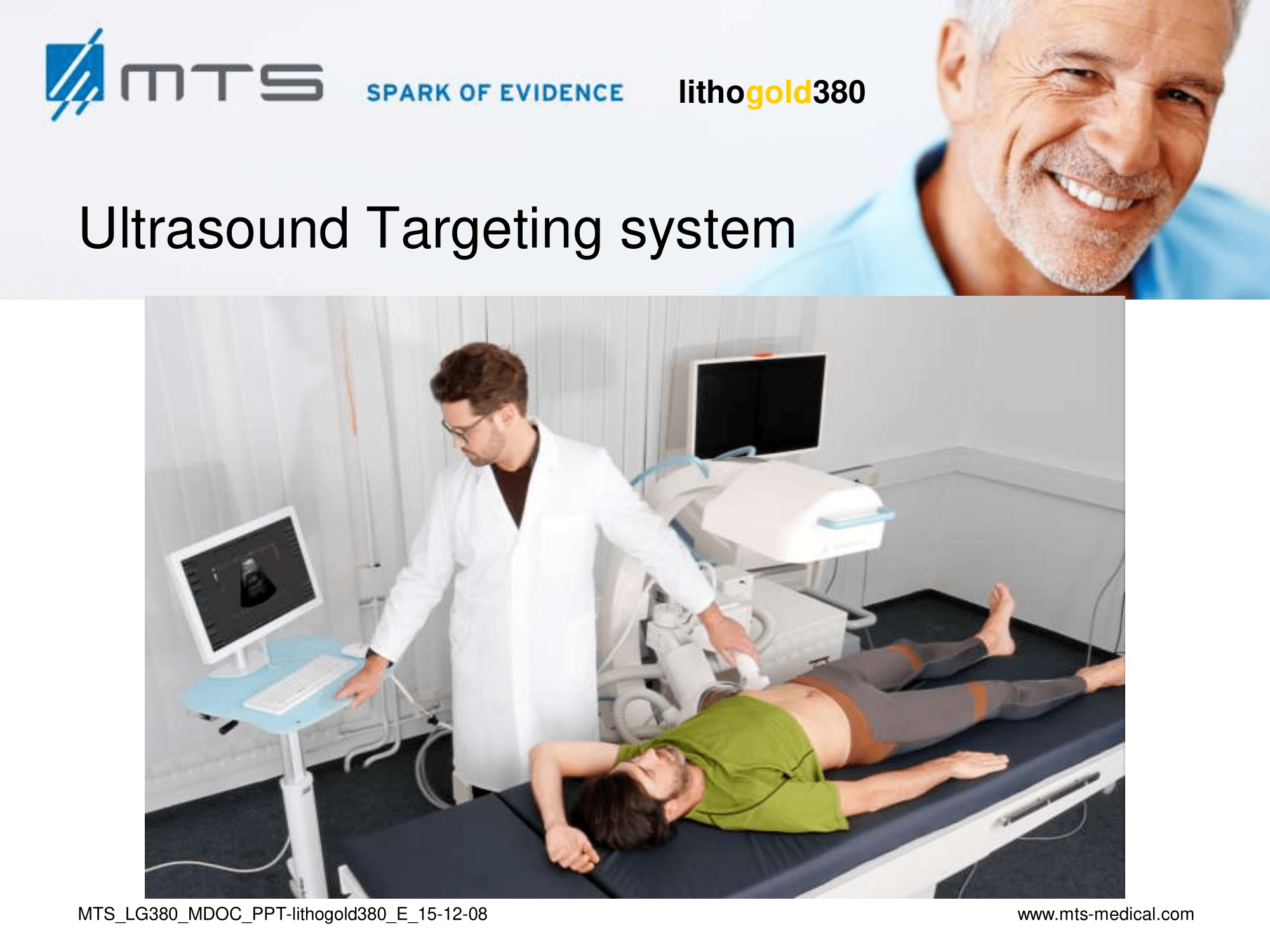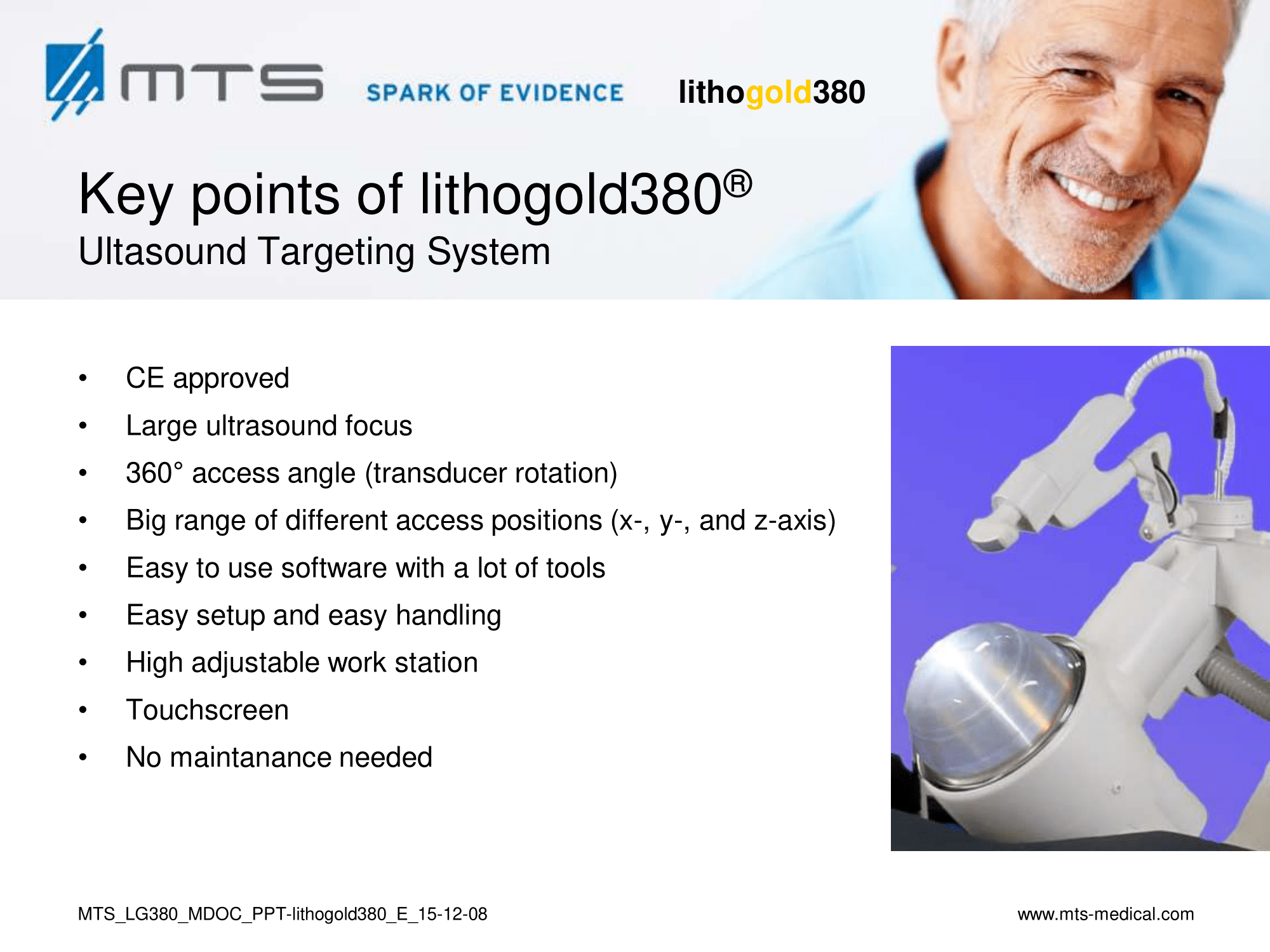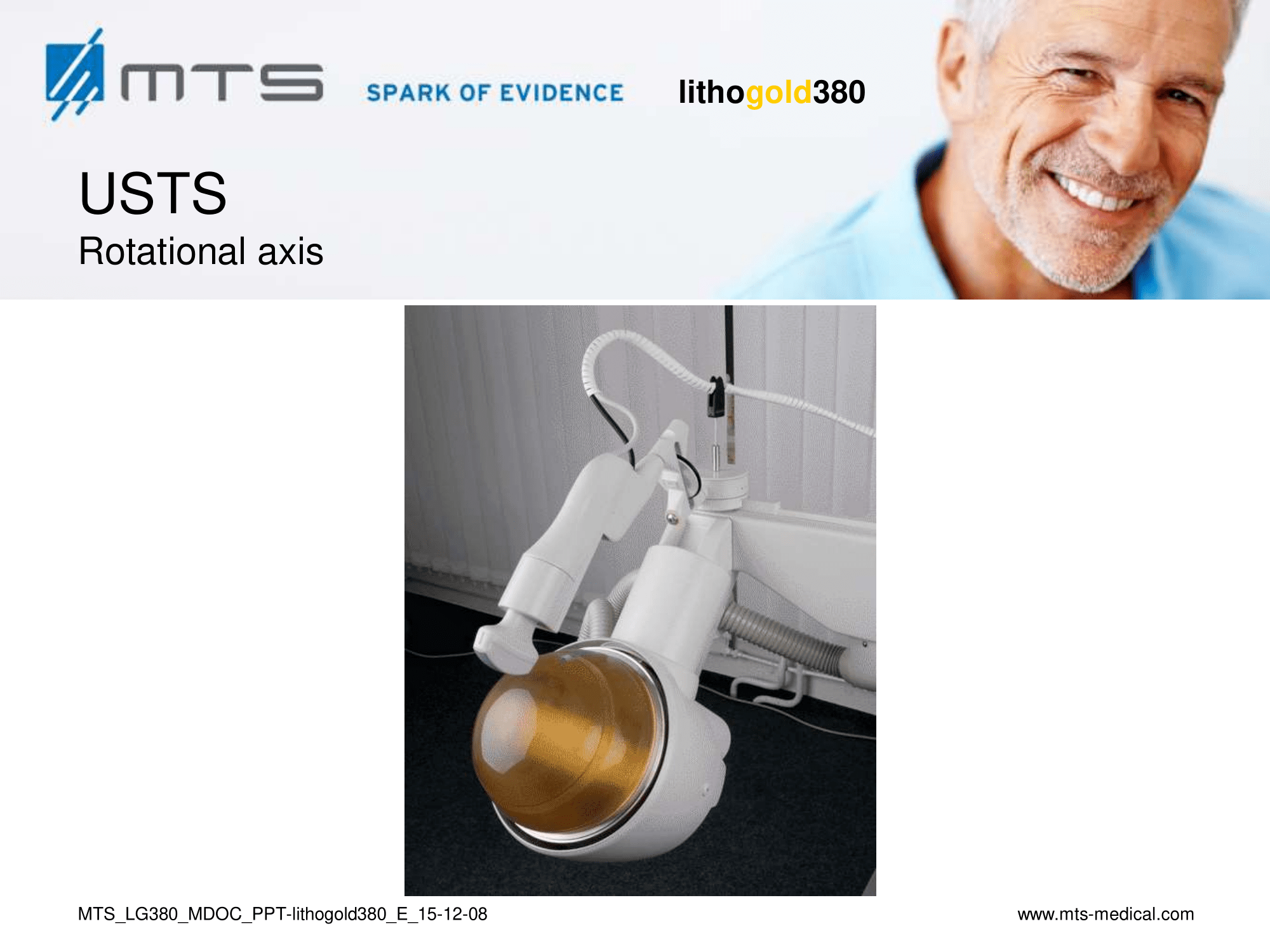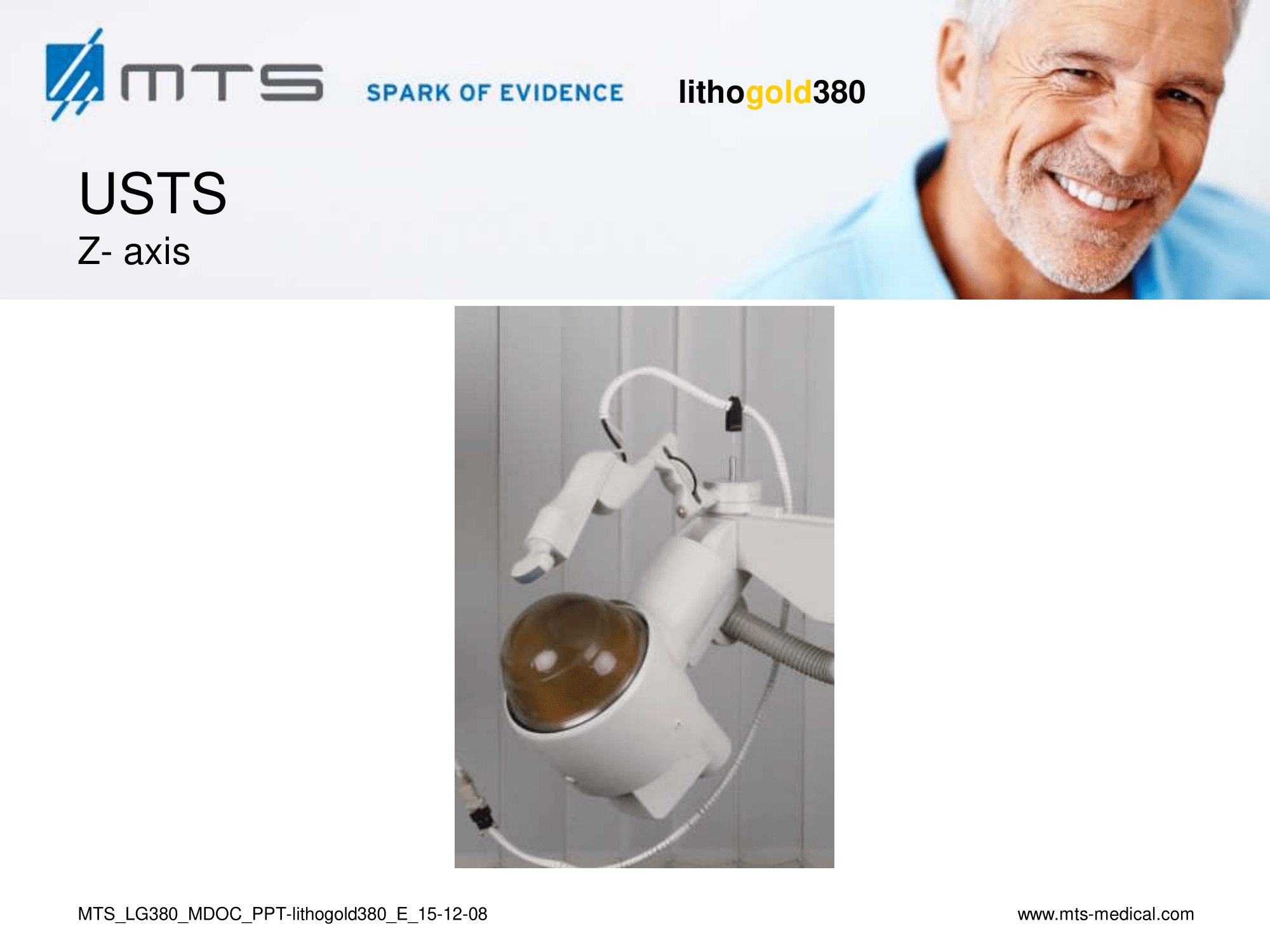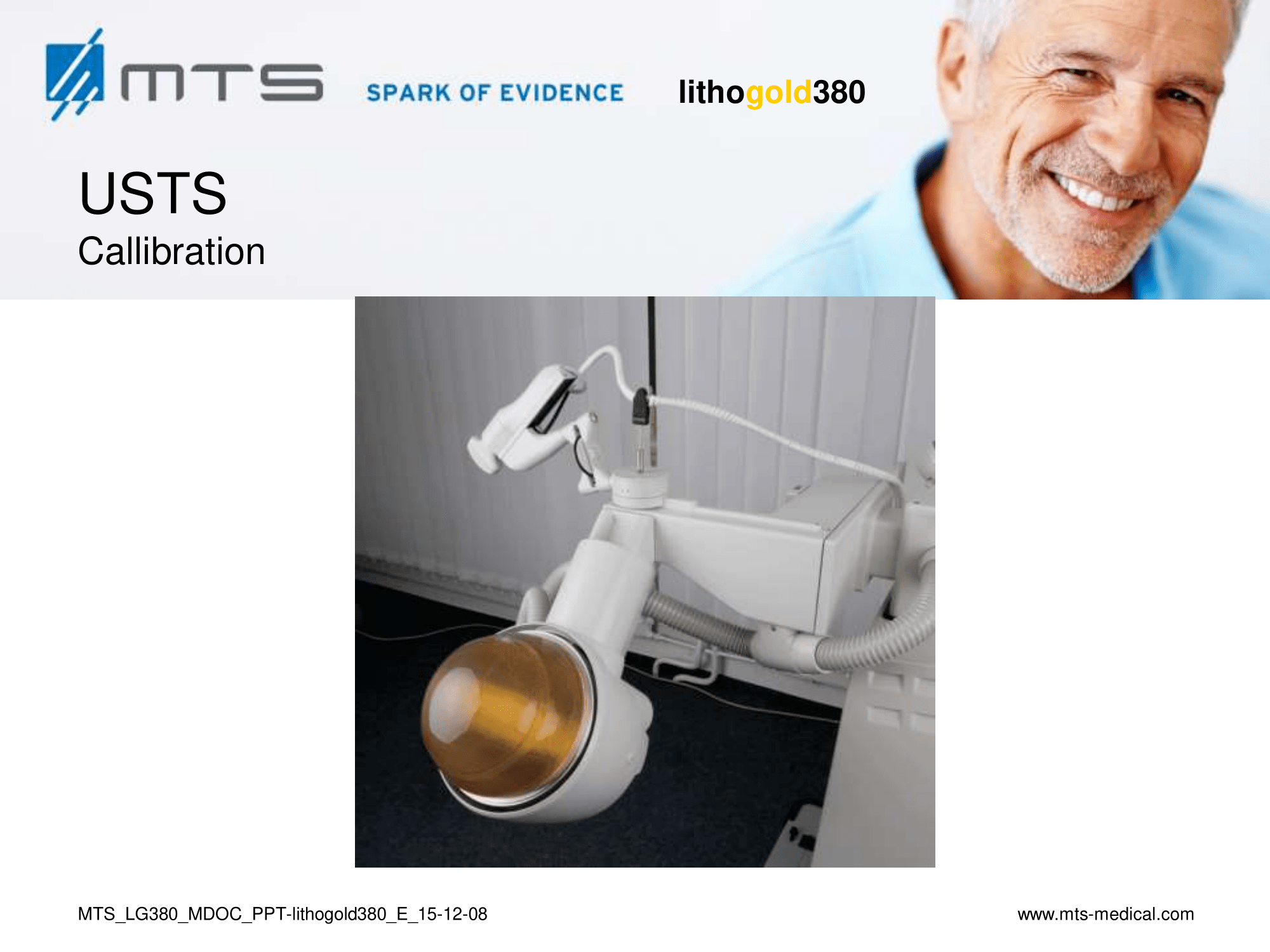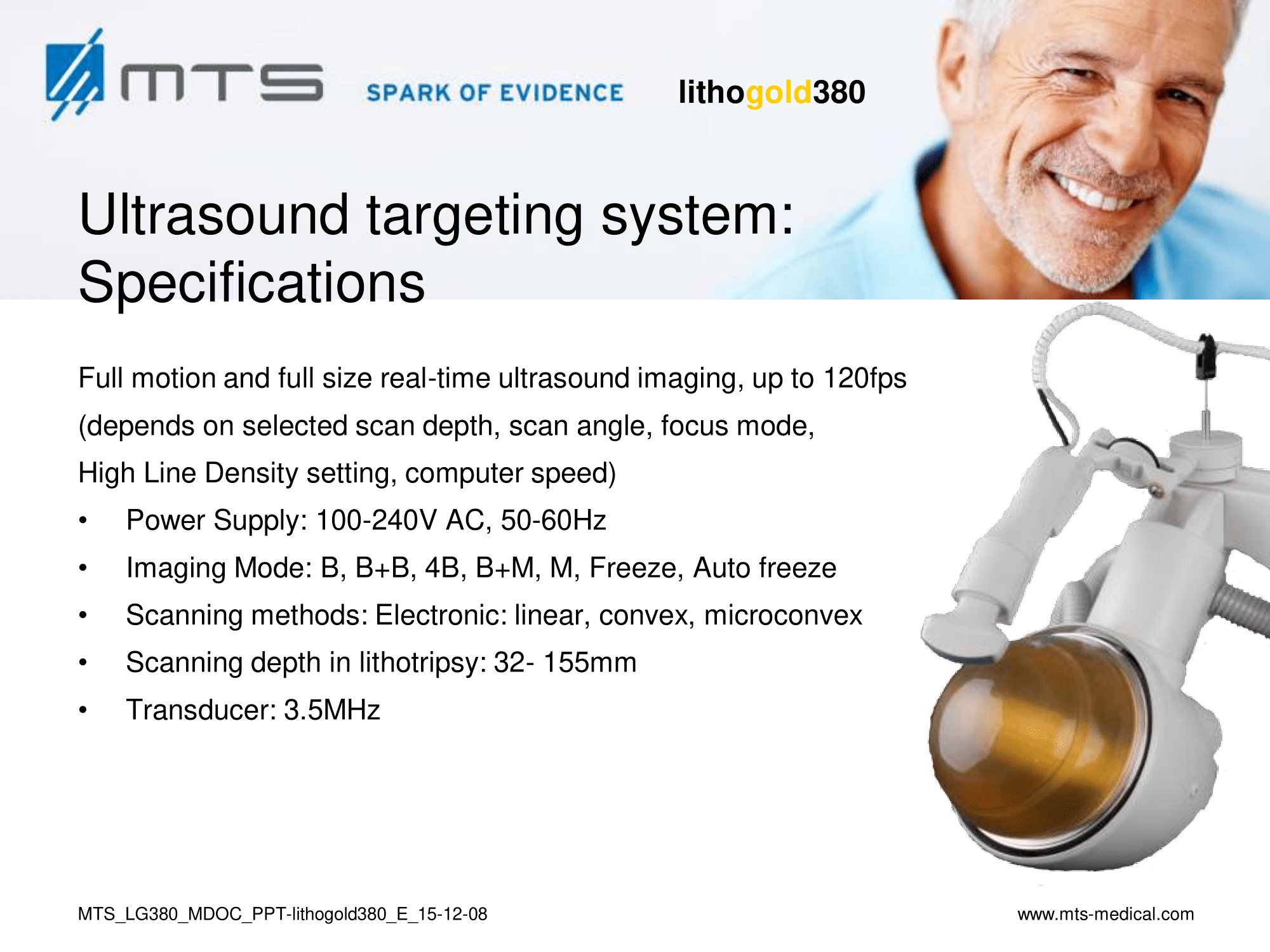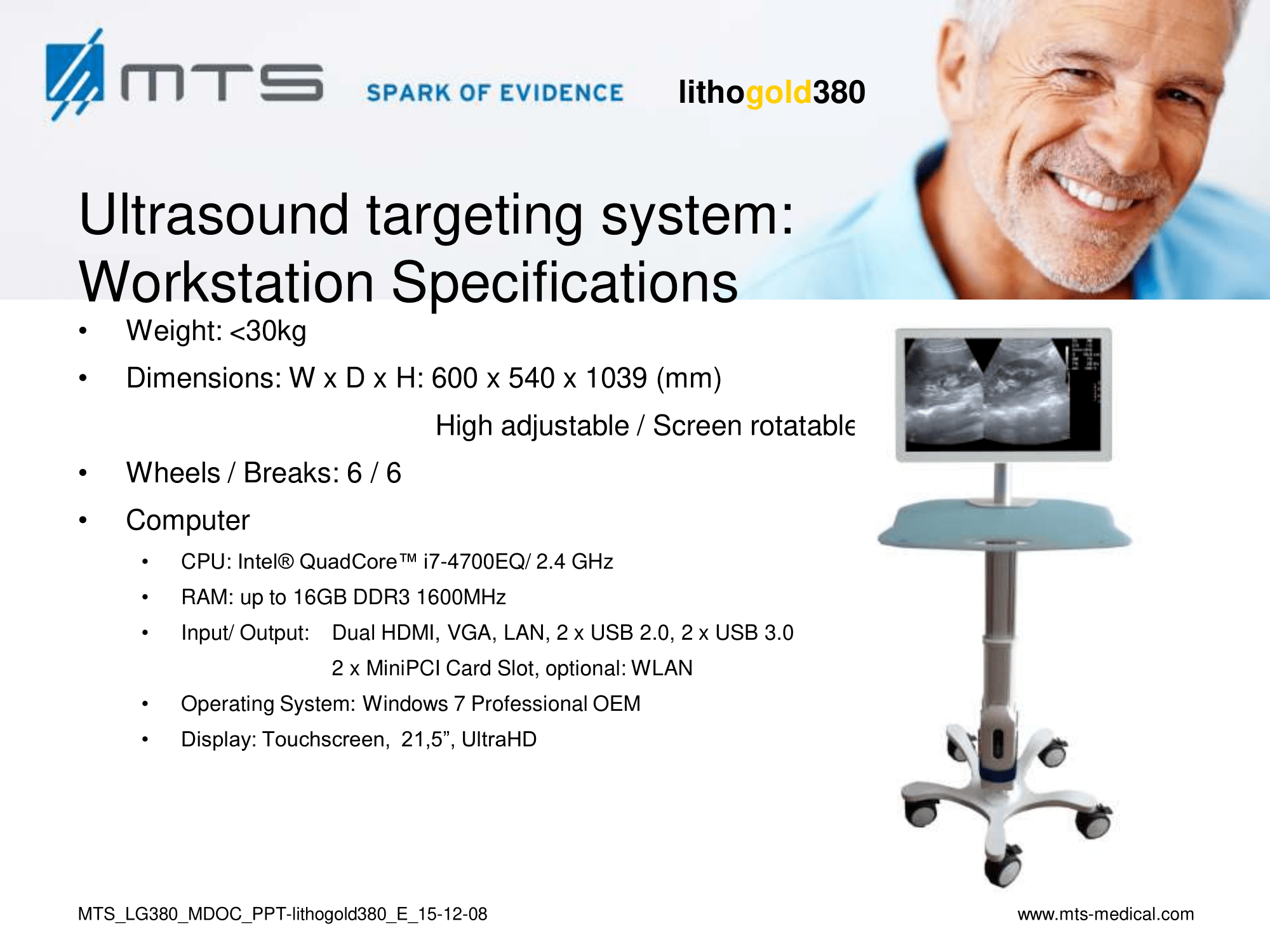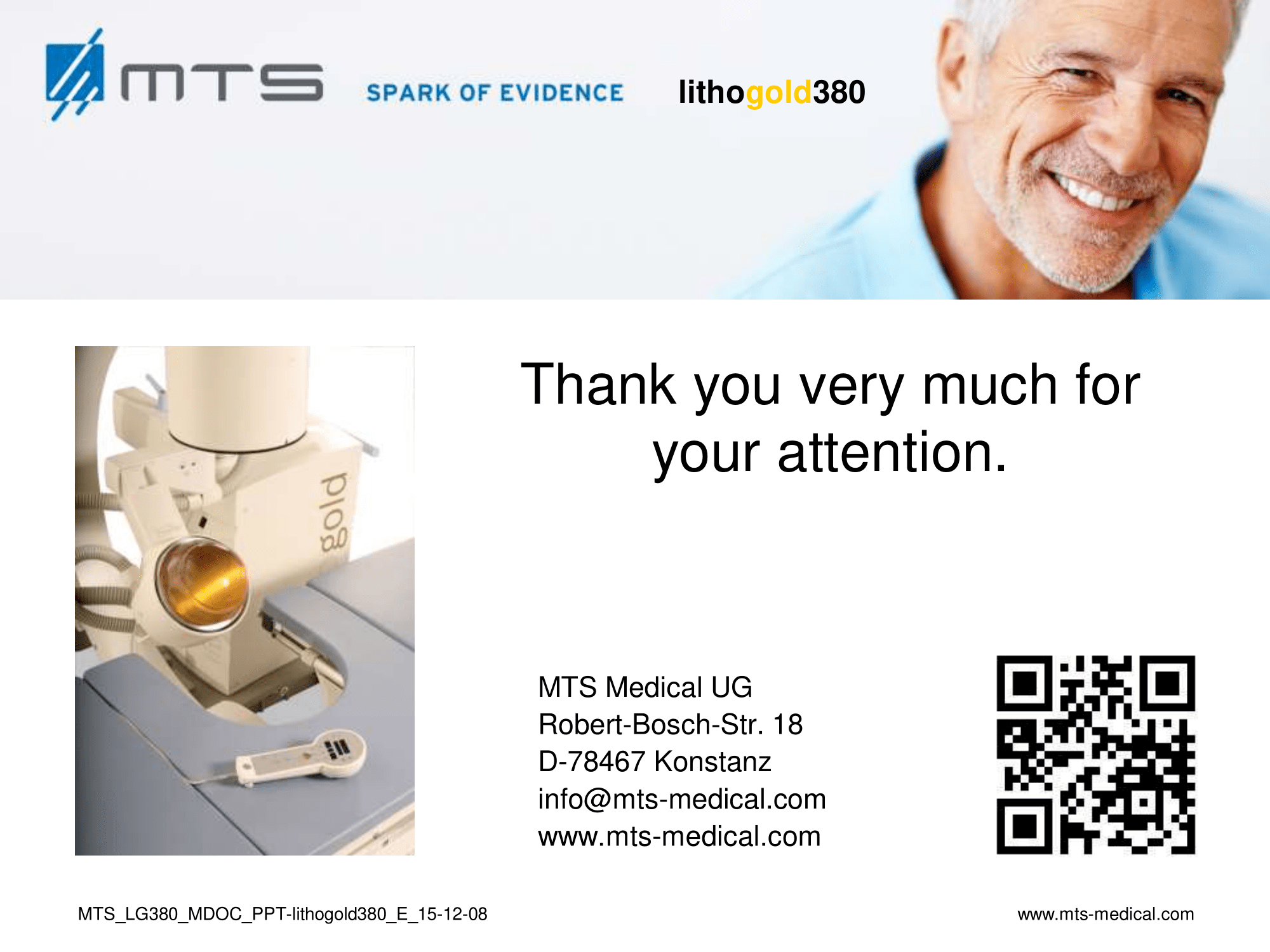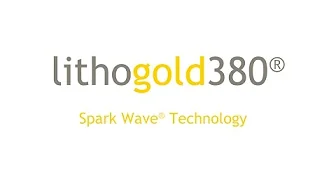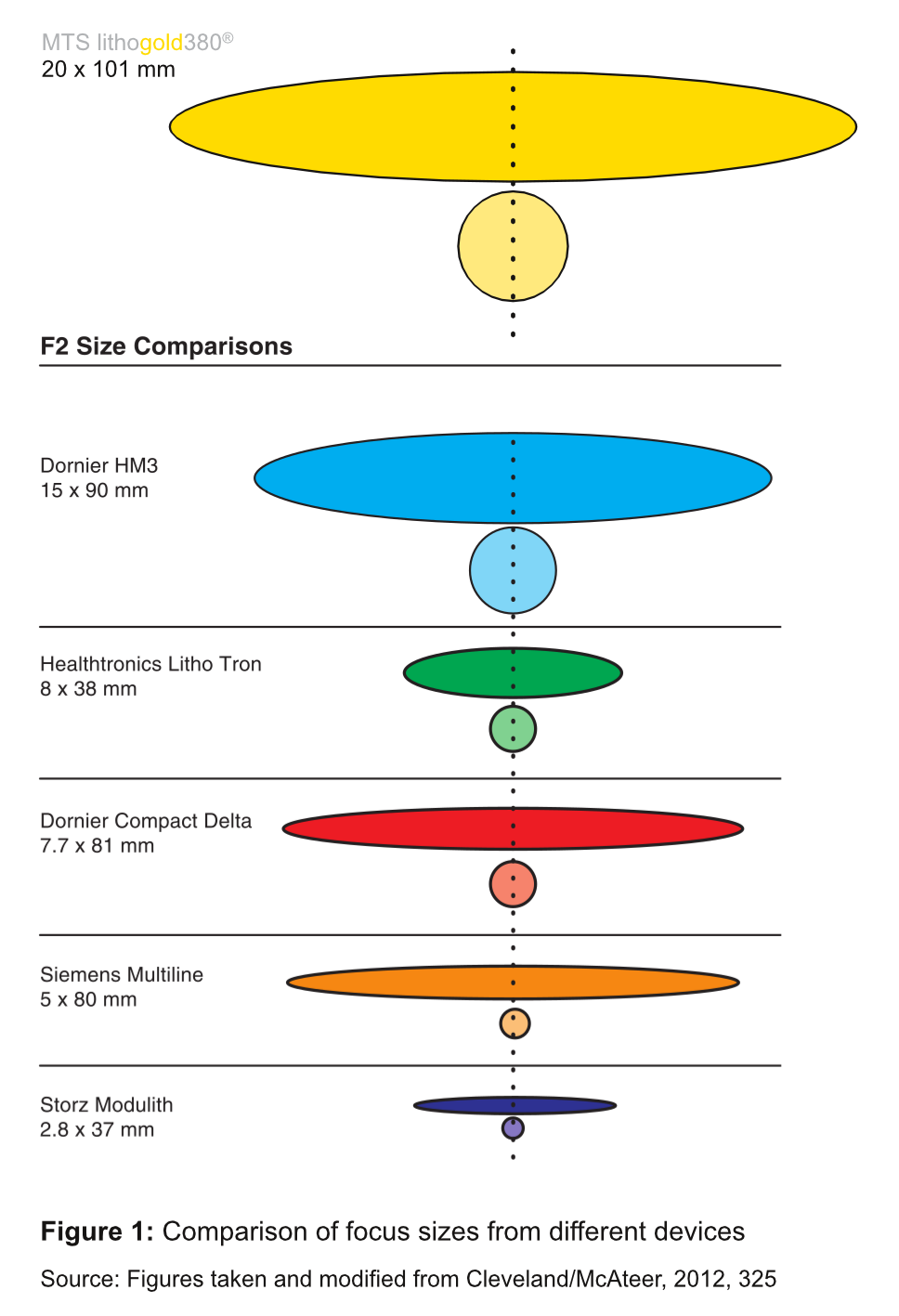A lithotripsy procedure should be effective and cause minimal tissue damage. In the process of the procedure, the negative pressure wave of a shock wave is the essential parameter for pain and tissue damage.
Through the development of Spark Wave Technology, this negative pressure, responsible for pain and tissue damage, was reduced to a minimum. Thus, it ensures treatment with no side effects and minimal tissue damage.
However, conservative treatment alone does not lead to the desired result. The kidney stone should be shattered into small pieces so effectively in only one treatment session that it can be completely excreted through the urinary tract after the first treatment. Very high performance can be reached through the so-called “Squeezing Effect” which was discovered to be a very efficient process in lithotripsy (Eisenmenger, 2003).
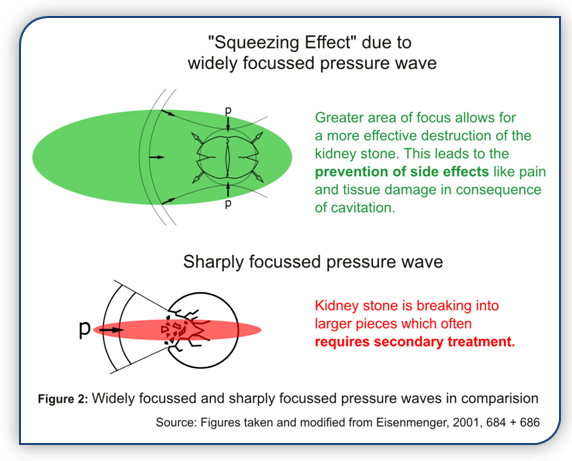 For the “Squeezing”, it is required that the area of focus, that strikes the stone, is larger than the stone itself and encloses it. Thereby, the part of the wave that affects the stone from the outside in the tissue or body fluid is the cause of inner inhomogeneous strain and tension (Eisenmenger, 2003). Hence, the state of the technology today is that a larger area of focus allows for a more effective destruction of the stone.
For the “Squeezing”, it is required that the area of focus, that strikes the stone, is larger than the stone itself and encloses it. Thereby, the part of the wave that affects the stone from the outside in the tissue or body fluid is the cause of inner inhomogeneous strain and tension (Eisenmenger, 2003). Hence, the state of the technology today is that a larger area of focus allows for a more effective destruction of the stone.
The difference between a large area of focus and a small one is depicted in the figure above. Whereas a large area of focus leads to strain and tension within the stone, a small and sharp focus leads to the breaking off of large pieces, which often requires secondary treatment.
The large area of focus not only has advantages in terms of effectivity, but also contributes to treatment with minimal tissue damage. A large focus area and the reduction of the negative pressure below 50 bar (5 MPa) allow for high efficiency in terms of fragmentation at a comparatively low positive pressure (Eisenwenger, 2003). This leads to the prevention of side effects like pain and tissue damage in consequence of cavitation (Eisenwenger, 2003).
These observations are illustrated once again by comparing different devices. Hereby, one can detect a strong correlation between the size of the focus area and the rate of success.
It can be concluded that minimizing the negative pressure in combination with a large area of focus leads to the best possible treatment results.
All the advantages of the MTS lithogold380 at a glance:
- High treatment success rate >95% with only 1 treatment
- Reduced anesthesia requirements
- Dual imaging with x-ray and ultrasound
- Easy targeting with wide shockwave path
- Especially suitable for stone treatment of obese patients
- Deep penetration depth (165 mm) reduces the incidence of treating
patients in the prone position - Large focus zone (20 x 101 mm) & tip pressure of 36,9 MPa max. = kidney-friendly lithotripsy
- Little side effects
- Latest generation electrohydraulic (spark-gap) lithotripter
